Product Description
Nankarrow StudioPanel acoustic room kits have been carefully designed to address primary acoustical concerns that are common to all rooms by combining various components such as wall panels, bass traps, diffusion and hardware into an easy to use format. This kit easily outperforms kits from Auralex, Primacoustic, and other global brands becuase of its focus on low frequency absorption.
The StudioPanel-M is intended for rooms upto 150 SqFt in size. It features high density PET Felt panels over acoustic foam for even absorption throughout the audio range. This makes the StudioPanel-M the ideal choice for more demanding studios, broadcasters and post production facilities while the innovative design can easily be adapted for home theater or high fidelity listening rooms.
The room kit is designed for rooms up to 150 ft2 (14m2), or can be combined with other products to treat larger spaces. Whether you are building a recording studio, home theater, or Boardroom, these easy-to-use kits are a perfect place to start.
The panels tackle problems affecting any room, such as primary reflections, flutter echo, and standing waves. In addition to acoustic panels, each room kit includes the corresponding mounting hardware and instructions for easy installation.
StudioPanels are made from high-density Pet felt panels (200 kg/m³) over premium high density acoustic foam (50kg/m3), offering nearly five times greater absorption than typical low cost foam alternatives. This means that you get more absorption with less panels, while assuring an even absorption curve throughout the frequency range.
The frameless design of the StudioPanels offer upto 2X better absorption than framed wooden panels, because sound waves can enter from the sides, nearly doubling the surface area of absorption and increasing the maximum wavelength that can be absorbed by the panels.
The single most important goal when treating the acoustics in a room is to create a neutral listening space so that decisions made during the recording process will translate well to the car stereo, home entertainment system and on the radio.
Most residential or commercial rooms are rectangular with parallel walls. This means that these rooms will suffer from powerful first order reflections, flutter echo, standing waves and resonance. The good news is that since we know that these problems exist, we can predict what will occur and develop solutions to address each one.
Does this mean that with a room kit you can turn a bedroom into a million dollar studio? No, this would be impossible. But what we can do is turn a bad sounding room into a very functional recording space that will enable you to get work done.
Specifications:
- Core Material: High Density Pet Felt Panels over Acoustic Foam
- Density: 200 kg/cmb
- Edge: Beveled Edges
- Fire Rating: Class-B/1 (ASTM E 84 / CAN/UL-S102)
- Mounting: Adhesive + Galvanized steel self adhesive impalers
What’s in the box:
- 8pcs StudioPanel Corner Bass Traps (900mm x 225mm x 225mm)
- 8pcs StudioPanel Columns (900 x 300mm x 110mm)
- 8pcs Scatter Blocks (300mm x 300mm x 60mm)
- 6pcs NeoCurve (600mm x 600mm x 75mm)
- Adhesive Spray + Impalers

For the past 20 years, studio control room designs have evolved to where today, most employ variants of the LEDE or live-end, dead-end room concept whereby the source end of the room tends to have more treatment while the receive end of the room has less.
The ‘idea’ behind the design is that with more treatment at the source end of the room – where the primary left, right and center speakers are located – the engineer will be better equipped to make critical decisions such as spatial placement of the instruments, percussion, voices and effects in the mix. The rear or receive end of the room is intentionally left more ‘live’ to better replicate a ‘real’ listening environment such as a living room. The StudioPanel-M room kit employs this same approach whereby the majority of the absorption is applied to the source of the room while the balance is positioned behind the listener.
Today, most studios employs a LEDE variant where absorption is more evenly distributed around the room. The StudioPanel-M room kit employs 70% of the absorption at the source end.
Primary Reflections
Primary reflections are powerful reflections that echo off the nearby walls and ceiling that compete with the sound coming from the studio reference monitors. Since the sound reflecting off the walls will arrive slightly after the original sound, these will invariably conflict, causing phase cancellation. Because the effect happens at multiple frequencies, the resulting effect is known as comb-filtering.
The StudioPanel-M room kit comes with eight (8) Control Columns. These long panels measure 12″x48″x2.5″ (30x122x6cm) and designed to be positioned at the source end of the room at ear level where primary reflections are most prevalent. By reducing the intensity of these reflections, one immediately enjoys a more defined listening space. Because the brain is no longer trying to discern what is ‘real’ versus what is reflected, it does not have to work so hard. This reduces ‘ear fatigue’ making recording easier.
 Comb filtering gets it’s name from how it displays on an oscilloscope.
Comb filtering gets it’s name from how it displays on an oscilloscope.

Flutter Echo
Clap your hands in an empty room and you will hear a trailing echo as the sound ricochets off the walls, ceiling and floor. This is known as flutter echo or high frequency room chatter. It is particularly noticeable in rooms with parallel surfaces whereby it will echo from front-to-back, side-to-side and ceiling-to-floor. When a room is too lively, there is no way confidently introduce reverb or echo to the mix.
The StudioPanel-M room kit solves the problem with 22 absorptive panels. These are strategically distributed around the room and bring the ambiance under control. Side-to-side flutter echo is subdued by the Control Columns while front-to-back problems are managed using the combination of Broadband Absorbers, Control Columns and Scatter Blocks.
Scatter Blocks are a series of 12”x12”x2.5″ (30x30x6cm) panels that are typically distributed behind the listening position. Theses amazing devices play a critical role in a LEDE room design by randomly absorbing energy while allowing some of the energy to reflect back into the room to retain a sense of air and space. We call this effect Soft Diffusion™.

Diffusion
The StudioPanel-M room kit employs a variant of the LEDE room design whereby the source end of the room tends to be more absorptive while the receive end is left more lively. This creates a sense of air or space in the room which makes the room ‘feel’ more natural.
The smaller panels provide an effective alternative to the high cost of diffusers. Eight great looking 12”x12” (30x30cm) panels are strategically distributed at the receive end of the room to absorb some of the energy while allowing some of the acoustic energy to reflect back into the room. This helps control flutter echo and makes it easier to mix in spatial effects such as reverb and echo.

Bass Management and Resonance
Since most rooms are either square or rectangular with parallel walls, sound will invariably echo from one parallel wall to another and echo right back again. At higher frequencies this is known as flutter echo. At lower frequencies, this is called a resonant frequency or a standing wave.
Each frequency has a wavelength and you can calculate the fundamental resonant frequencies in a room by taking the speed of sound (1130 ft/sec) and dividing it by the distance between parallel surfaces. For example: a 10’ x 12’ room with an 8’ ceiling will have resonant frequencies at 113Hz, 94Hz and 141Hz as these waves and their harmonics will perfectly fit inside the room and resonate. So in this room, not only will you have a resonant frequency at 113Hz, but you will have others at multiples such as 226Hz, 339Hz, 452Hz and so on.
These frequencies will resonate and depending on where you are sitting they may appear to sound louder. Unless treated, you will naturally reach for your equalizer to turn them down. Then, when you play the recording back in your car or at a friends place, you will find that these frequencies are missing. This is one of the reasons why bass management is so important: by reducing the resonance you are essentially creating a more neutral listening environment. And this is the huge advantage StudioPanels have over regular foam: the absorption is even and extends into the lower frequency region.

Room Modes
Studio owners often complain that their rooms may sound good at the mix position, but as they move around the room, the bass can sound boomy or completely lacking. This problem is caused by room modes. A room mode can be thought of as a place in a room where two low frequency sound waves collide.
When two waves collide ‘in phase’ (point A in the illustration) they will amplify each other creating a modal peak in the room response. When they collide ‘out of phase’ (point B), they create a modal null and will cancel each other out. Although room modes occur at all frequencies they are most audible in the bass range where they can severely affect the bass response of our room.
To address bass problems, the kit comes with two full sized 24”x48” x 6.5″ (60cm x120cm x 16cm) bass traps. This creates a 17” (43cm) deep air space behind the panel that will effectively absorb bass to 100Hz and below. By adding a bass trap, you will attenuate the low frequencies in the room and the modal interference will be reduced.


Don’t make Bad Mixes!
This kit solves the biggest problem in India, the AutoRickshaw mix. This phenomenon started in the 1980s and has continued till today and has been first documented by Gulshan Kumar from TSeries, when he noticed that whenever autorickshaws played his albums, he could only hear treble ergo hi-hats (for miles) and could not hear any bass. This was curious, because bass frequencies have longer wavelength and should travel further than high frequencies.
This happened because most music studios in India had no bass-trapping or low frequency absorption but had almost total absorption above 1000Hz by covering all the walls and ceiling with 2inches of foam/glasswool and fabric. Consequently the sound engineers always thought there was too much bass in the songs, so they kept putting a high pass filter or chopping low frequencies, and they always thought the songs lacked brightness, so they kept increasing the treble in the mix.
When these mixes emerged into the real world, they usually had little or no bass and too much treble.
Why are auto rickshaws important for mixes? Why not cars? This may seem like a joke but Auto Rickshaws are a close approximation of a “free field“, which means listening to a song without any modal resonance. The low frequencies escape easily through the open sides and even the canvas. If you ever want to hear how the bass in your mix really sounds, listen to it outdoor. Or listen to it in a room treated by StudioPanels.

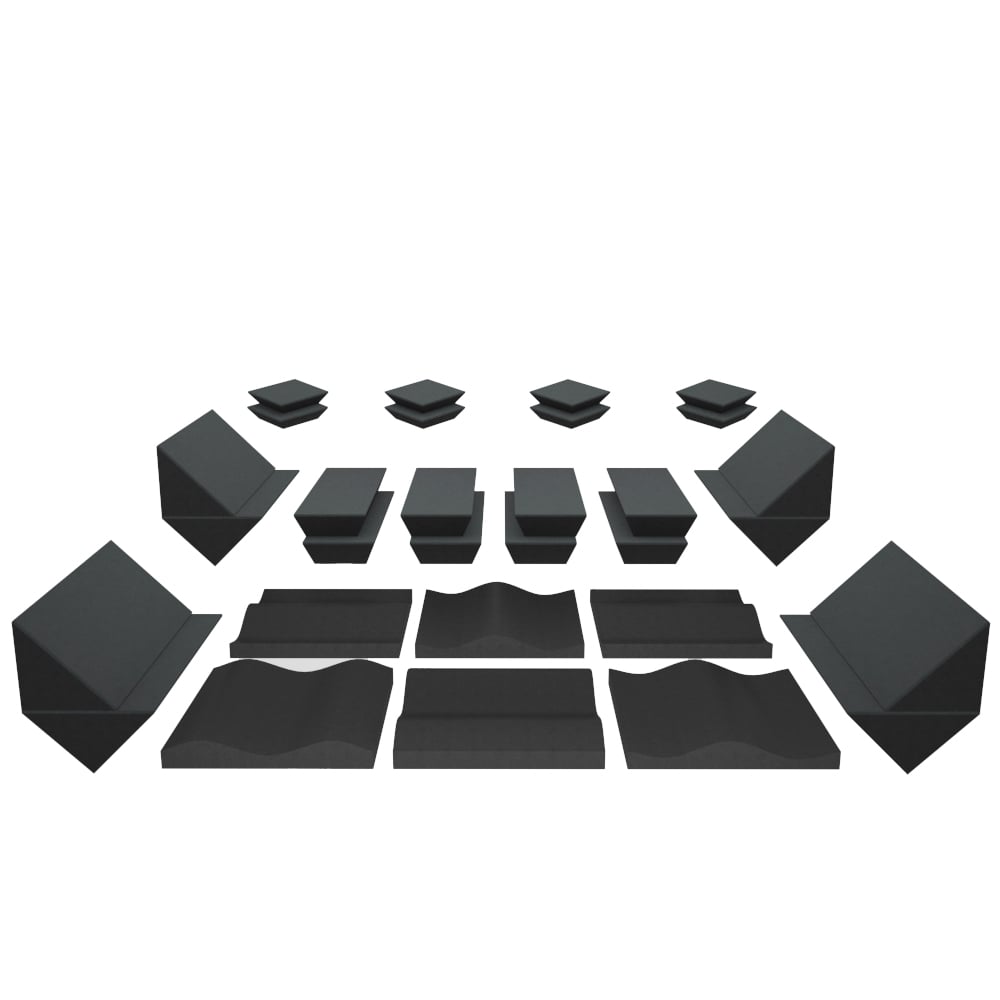
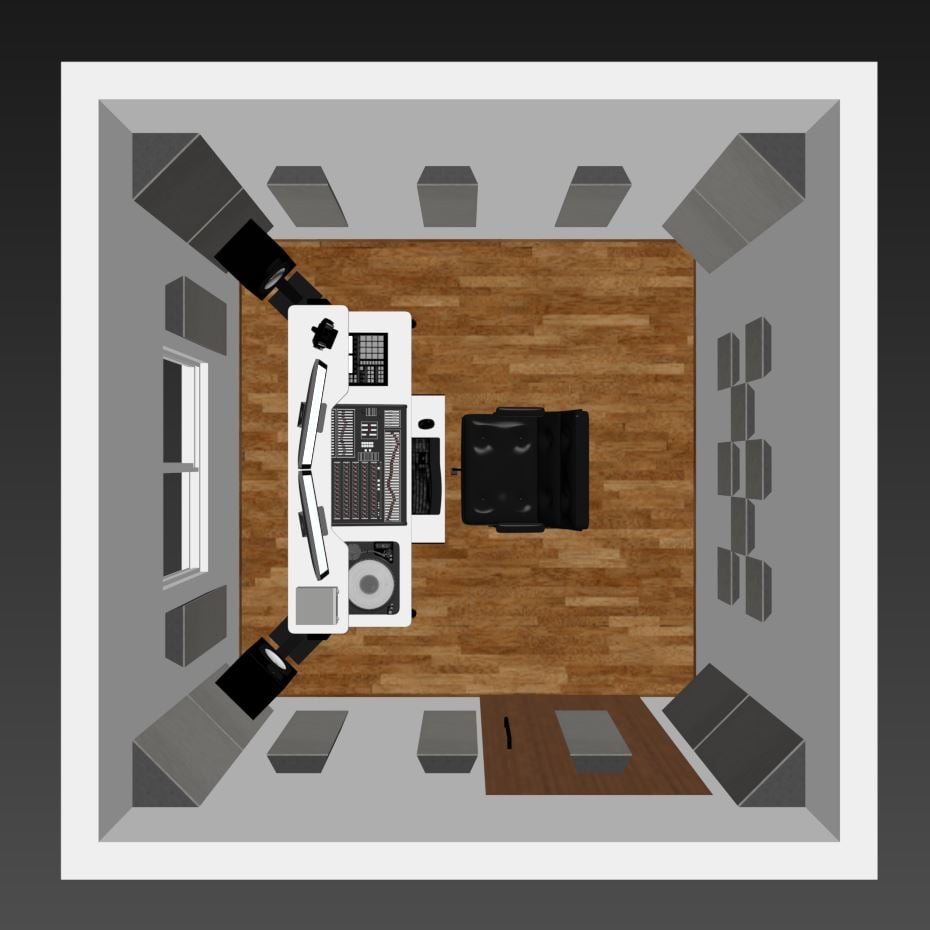
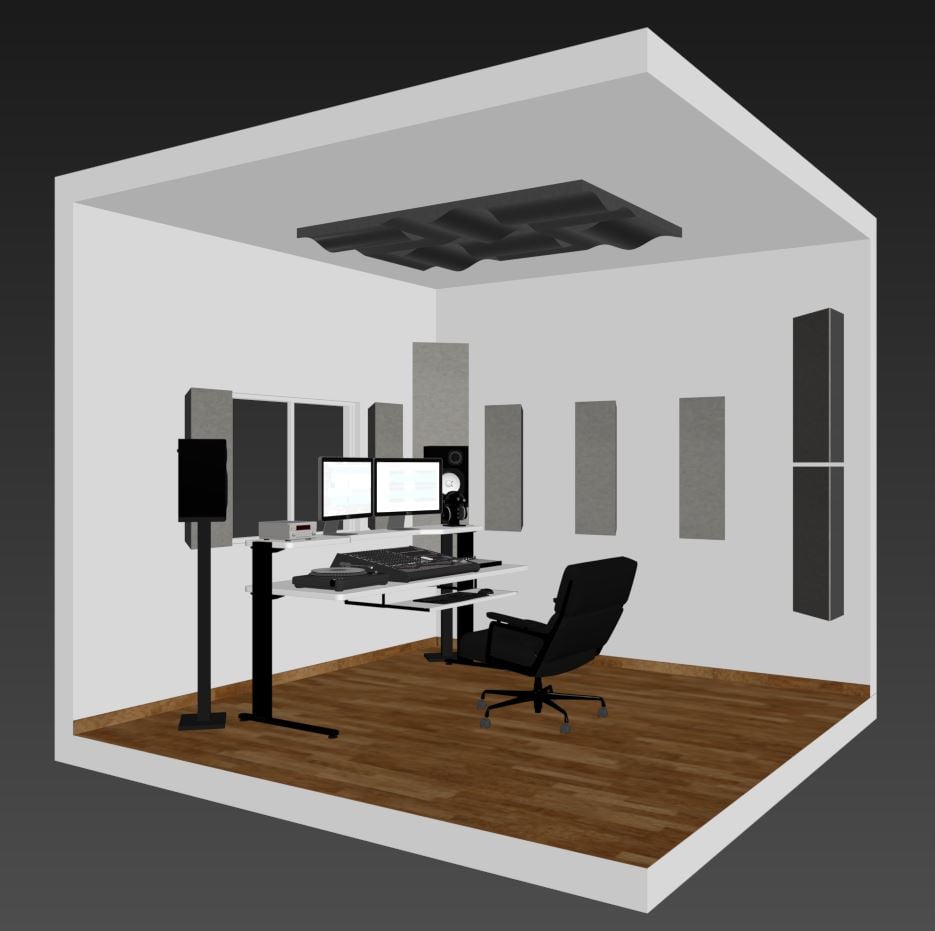
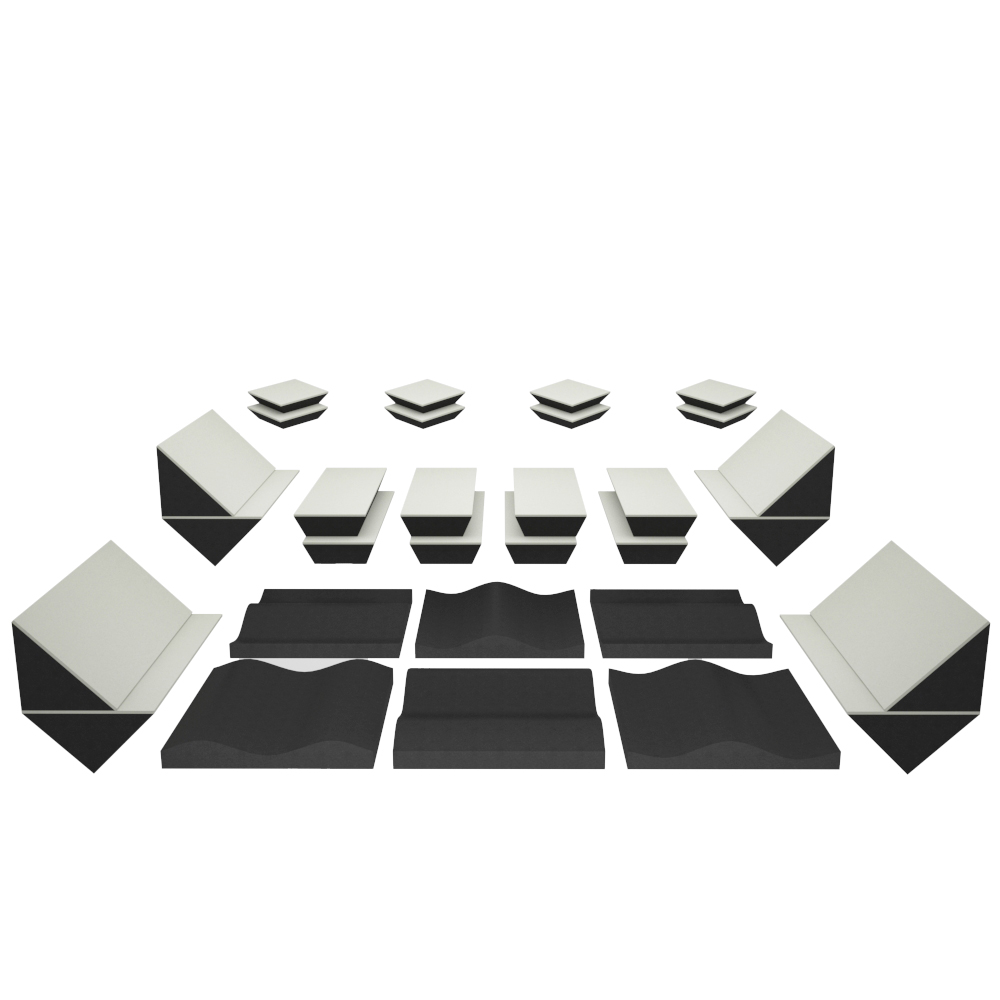
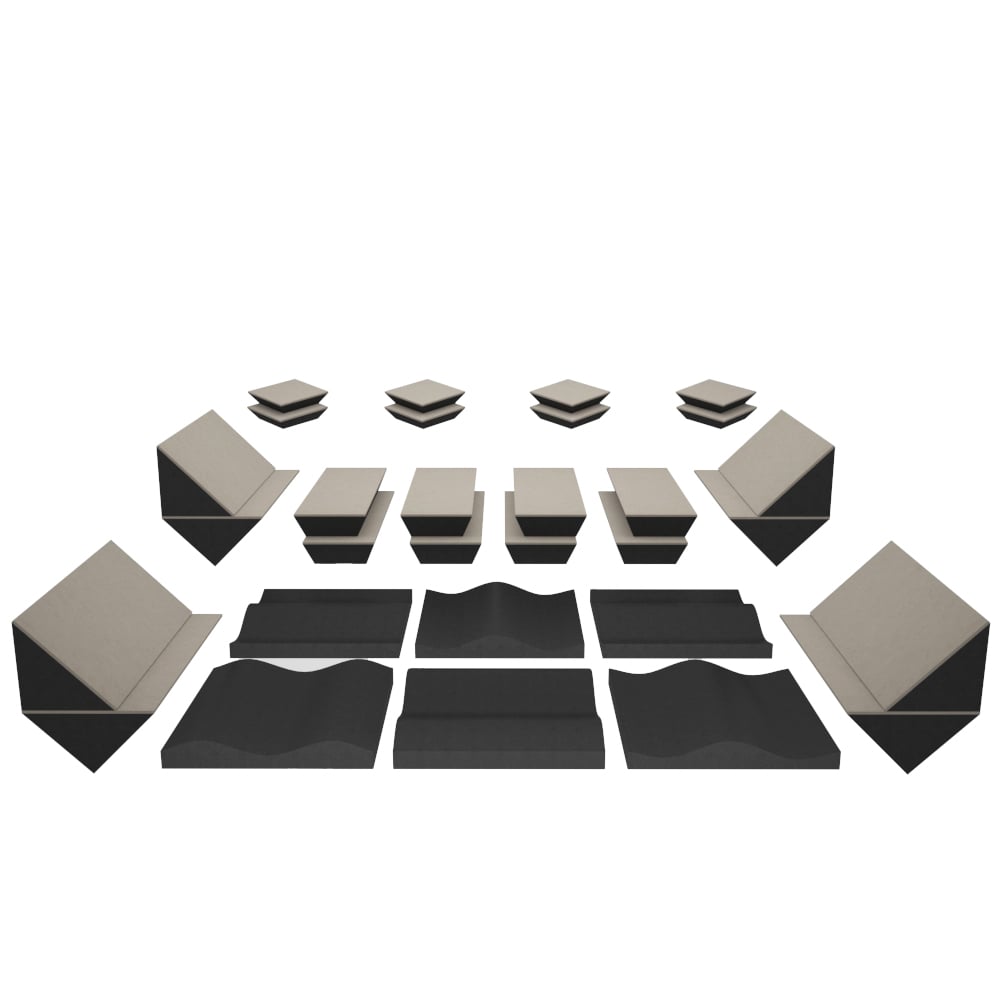
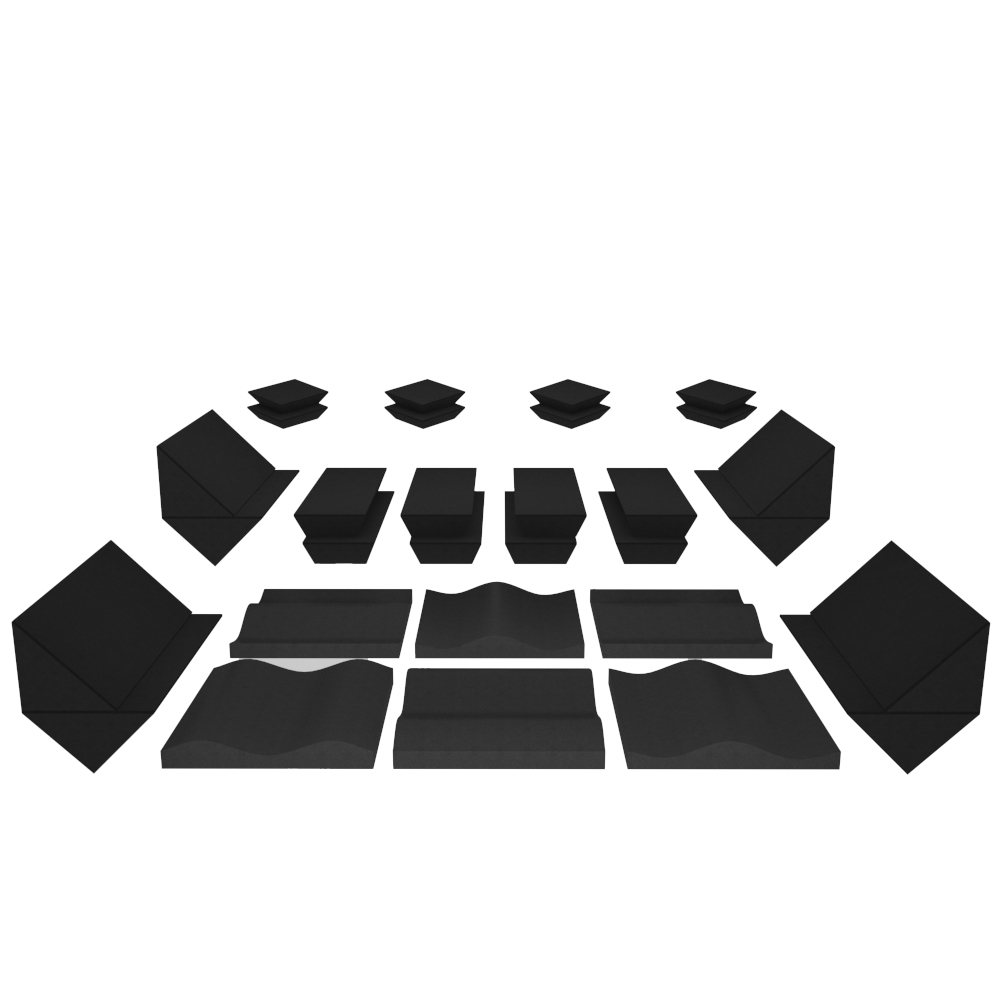
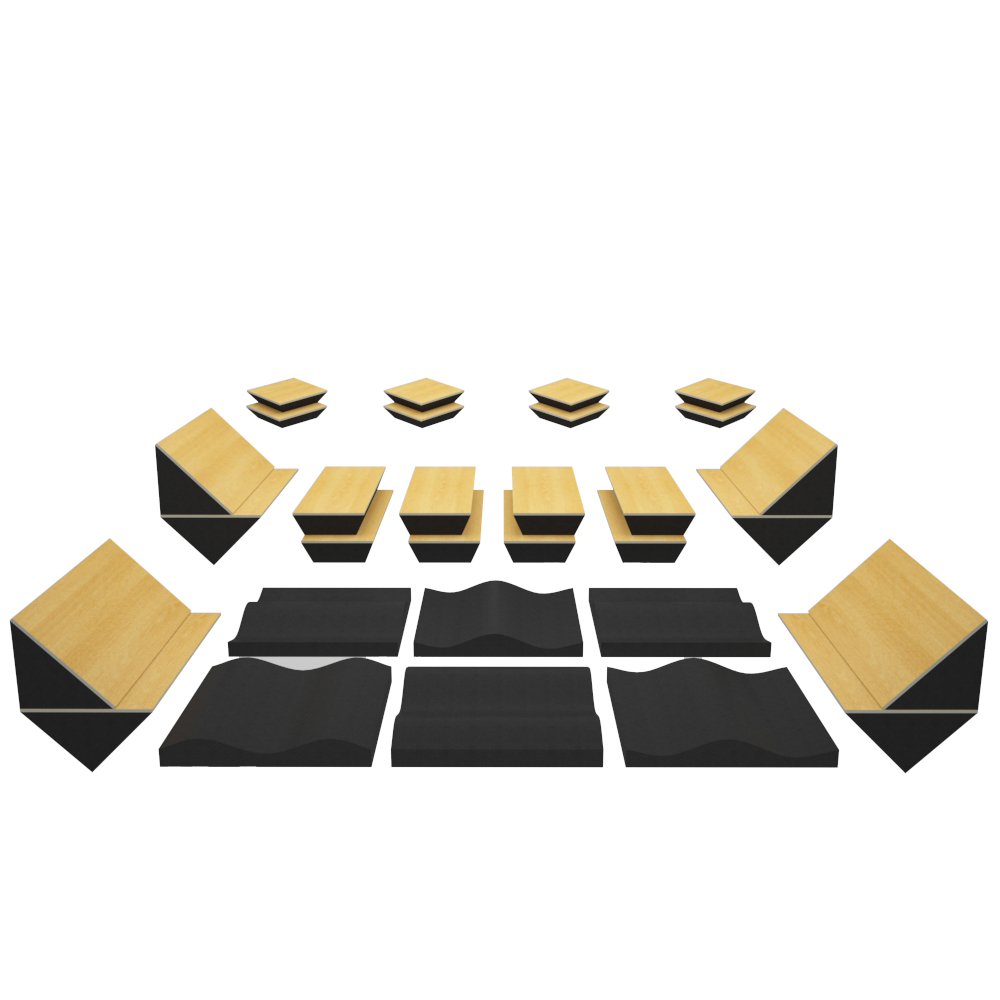

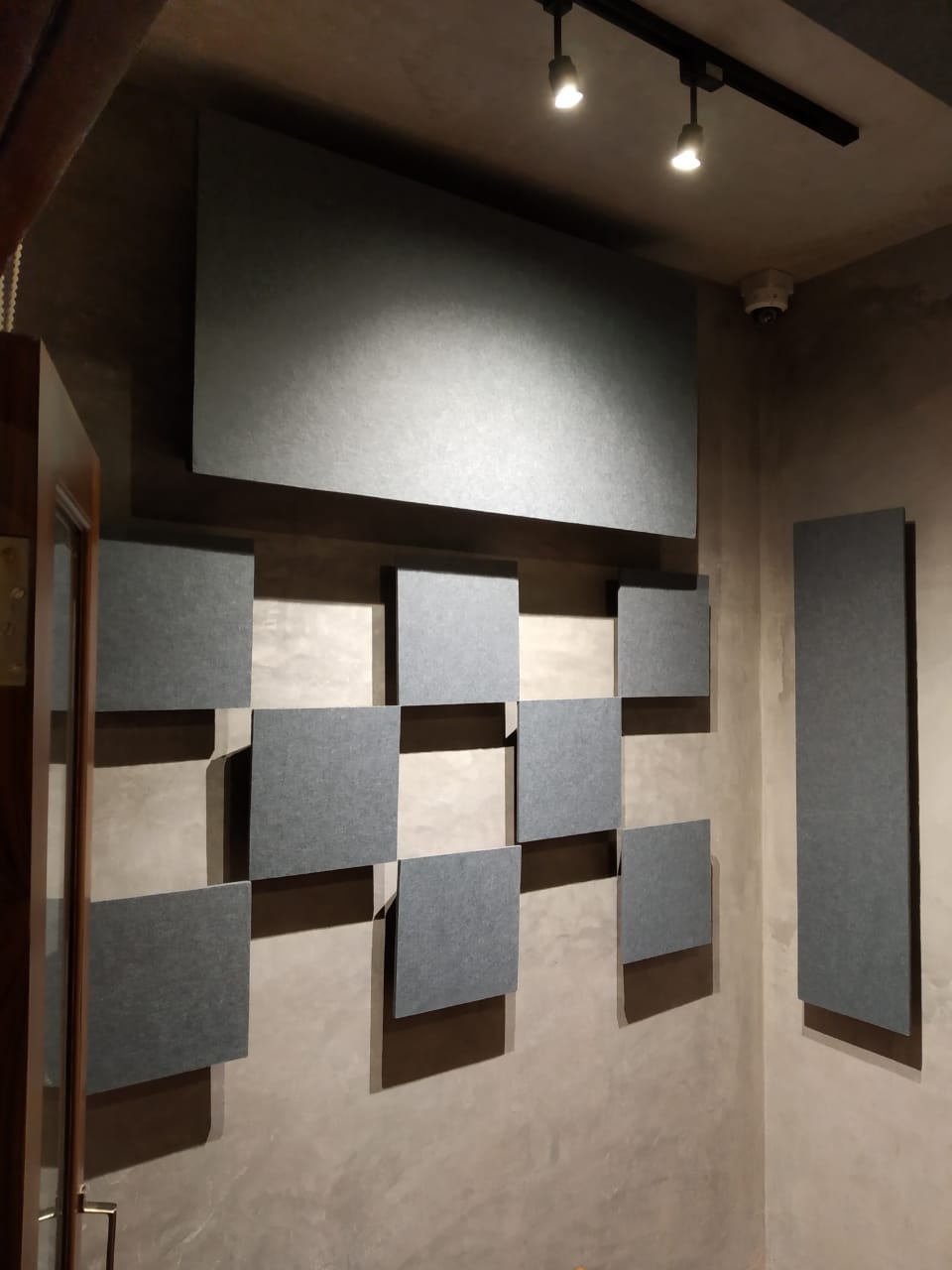
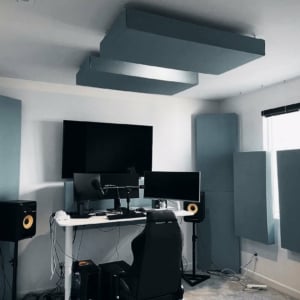
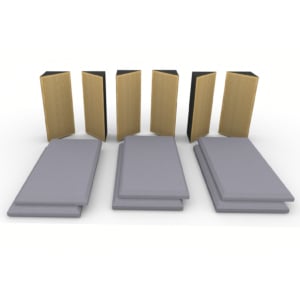
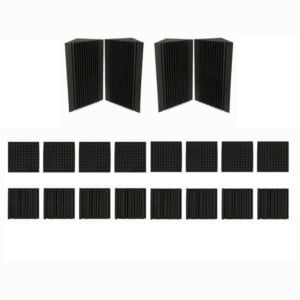
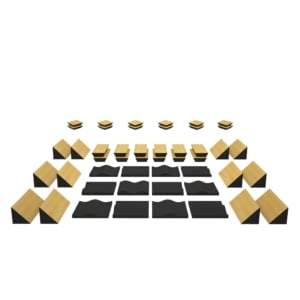
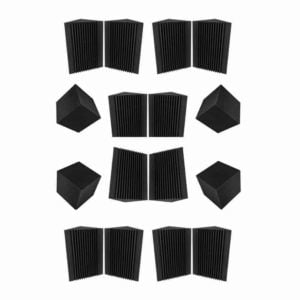
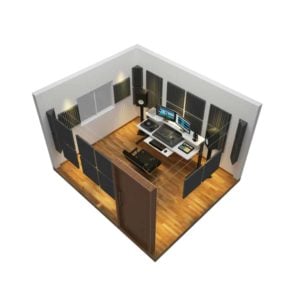
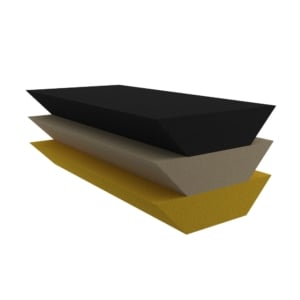
Chetan Desai –
Works as advertised. I mainly dub and produce audiobooks out of my home studio and also work on mixing advertising jingles. Wanted to control room echo and bought this on the basis of room analysis. I am happy with the service and quality of the product. My room sounds crisp and clear.
(0) (0) Watch Unwatch
Kaizad Mistry –
Took this on the advice of Ashutosh for my two channel hi-fi room. I had already picked up some acoustic foam off Amazon but realised it wasn’t helping with my muddy bass and needed better panels. This kit packs a lot of punch, is very well engineered and looks beautiful. The box was literally too big to enter my house – had to split up the panels and take them in.
(0) (0) Watch Unwatch
Bob Goldberg –
Bought this for my studio in Goa. This kit delivers a significant improvement over any non-treated room and provides a great platform that can easily be augmented to inch up the acoustic performance and tweaked for specific case perfection. And at this price it’s an instant, controllable and worthwhile solution with zero guesswork or fuss. I’ve found that I had to buy two additional broadband panels from Aural Exchange before I was satisfied with the low frequency control.
(0) (0) Watch Unwatch